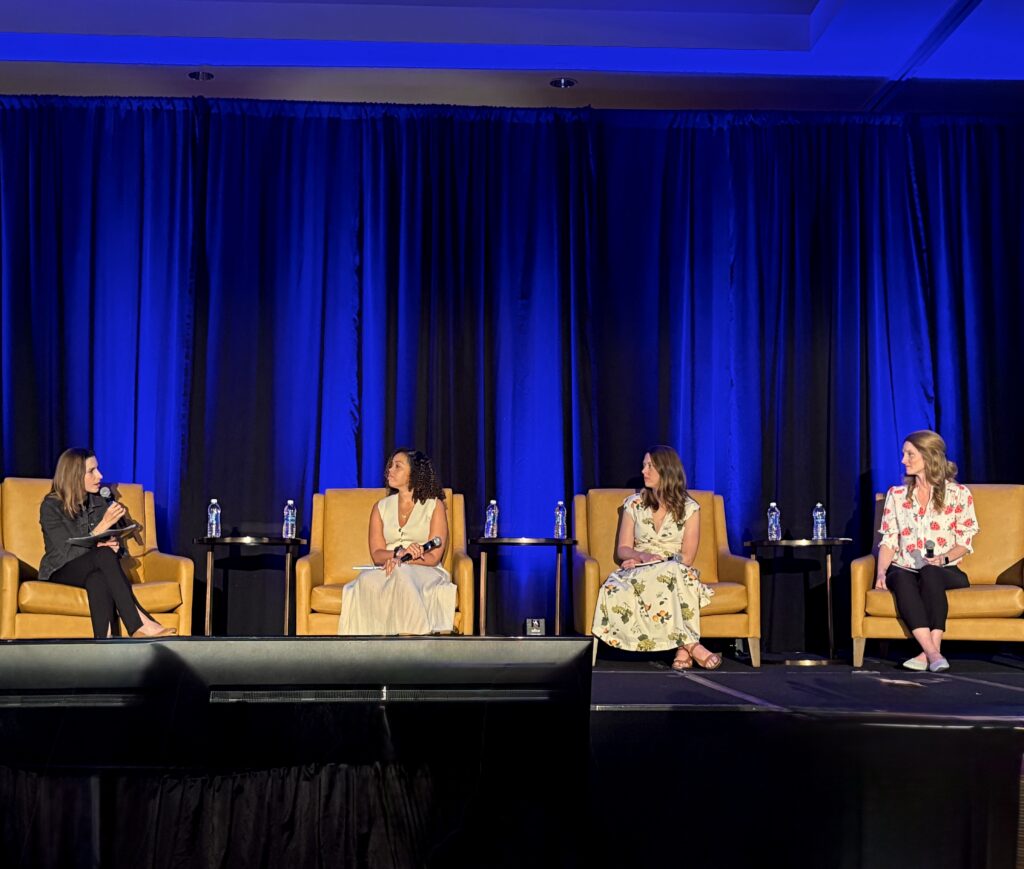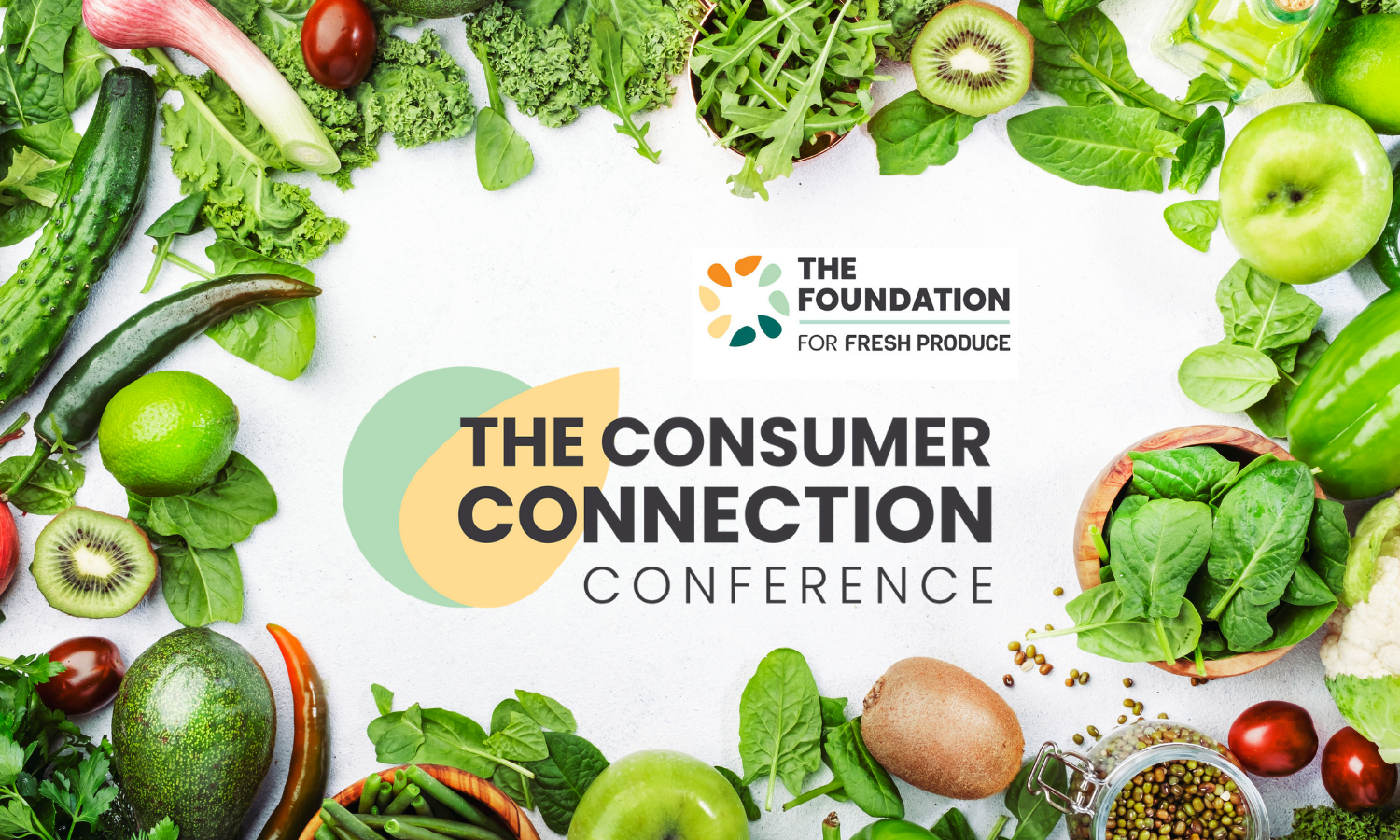Tracking trends is table stakes. Translating them into relevance and growth? That’s where the real work begins.
At The Consumer Connection Conference 2025, hosted by the International Fresh Produce Association (IFPA), we got an unfiltered look at what today’s consumers are craving, questioning and quietly quitting. From shifting generational mindsets to the rise of snack culture and the Ozempic ripple effect, one thing came through loud and clear: if you’re not meeting people where they are, you’re already behind.
This isn’t about trendspotting for the sake of it. It’s about understanding the deeper forces driving behavior and using those insights to craft strategies that actually resonate.
For marketers, commodity boards and produce brands ready to cut through the noise, here are six truths shaping the future of food right now and what they mean for fresh produce and beyond.

1. Snacks are the new meals.
You’ve heard the term “grazing,” but we’ve moved beyond snack culture and into full-on snack dominance. In 2025, according to Google, 62% of consumers say they prefer grazing, with one in three replacing at least one traditional meal a day with snacks. Snacking-related searches are up 300% year-over-year, and “healthy snack” is the top snack-related Google search.
But this isn’t just about crunch – it’s about function. Consumers, especially Gen Z, want snacks that do something: think gut health, energy and focus. If your product doesn’t come with a clear, understandable benefit, it’s not making it into the cart…or the content feed.
2. Redefining value.
Statistics from IFPA, Google and NielsenIQ all showed that Americans are concerned about rising food prices. But what’s shifting fast is how they define “value.”
Perishability and waste are top of mind, especially with fresh produce. Consumers are doing the math: How many days will this last? Will my kid actually eat it? What happens if it goes bad before Thursday?
To win, brands need to go beyond price cuts. Tell the story of how your product stretches across meals. Show how it fits into real-life routines. Solve the “what do I do with this?” problem before it’s even asked.
3. Good intentions aren’t making it to the plate.
Consumers know that fruits and vegetables are an important part of a healthy diet – and they want to eat healthier. But most aren’t following through. According to the 2025 IFPA Consumer Tracker Study, only 7% of Americans know how many servings of produce they should be eating each day.
The desire is there: cook more, feel better, eat healthier. But then “life starts life-ing,” as IFPA’s Lauren M. Scott put it. Time, budget and everyday chaos get in the way, creating a widening gap between wellness goals and grocery cart reality.
The fix? Make it easier. Think bite-sized education, simple meal hacks and seamless ways to add produce to what people already eat. It’s not about changing habits – it’s about fitting into them.
4. The rise of GLP-1s.
You can’t scroll a health feed or scan a headline without running into Ozempic or the broader GLP-1 conversation – and the movement is driving major shifts in how people shop, cook and snack.
Those on GLP-1s are eating out less, reaching for smaller portions and prioritizing nutritionally dense, high-protein, high-fiber foods – often made at home. That means fewer impulse purchases, more intentional grocery trips and a growing interest in functional, whole-food ingredients that deliver more with less.
This is produce’s invitation to reframe itself: portion-friendly, benefit-packed and ideal for a lighter, more intentional way of eating.
5. Gen Z doesn’t follow the rules.
They’re not waiting for permission to redefine health, food and lifestyle. Gen Z trusts social platforms more than the nightly news. They’re using food for immediate impact: to feel better, focus harder and power through the day – not necessarily to prevent something 30 years from now.
They also see food as an extension of identity, expecting brands to reflect their values of sustainability, transparency and diversity. This generation will boost what resonates and ghost what doesn’t—fast.
6. Trust has eroded.
Consumers aren’t blindly following expert advice anymore. Gen Z is more likely to get health information from TikTok than their doctor. Women are doing their own research before stepping into the exam room. And across generations, trust in media, institutions and traditional health authorities continues to fracture.
The takeaway? Brands need to communicate health benefits with clarity, not complexity. Lead with what people feel: more energy, better digestion, sharper focus. Because in a landscape full of noise and nutritional gray areas, the brands that win will be the ones that speak human – loud and clear.
The Bottom Line
You don’t have to chase every trend. But you do need to understand the cultural currents powering them—and how to turn that insight into brand relevance.
At Wild Hive, we partner with brands who want to lead, not follow. From strategy and storytelling to integrated campaigns that actually move the needle, we’re here to help you resonate in the real world.
Because in a fractured food landscape, it’s not about pushing product. It’s about creating connection.
